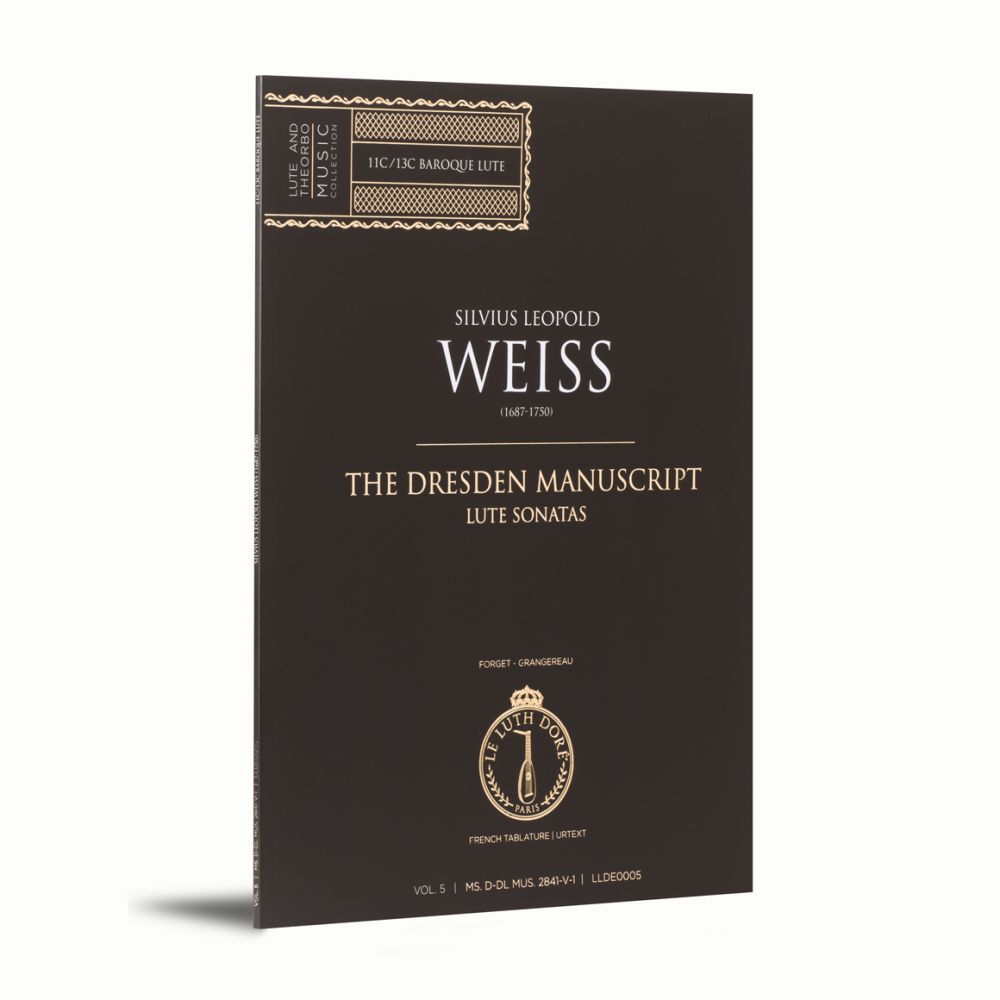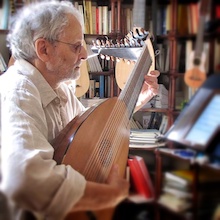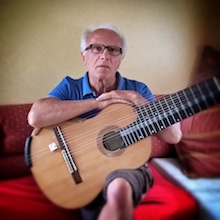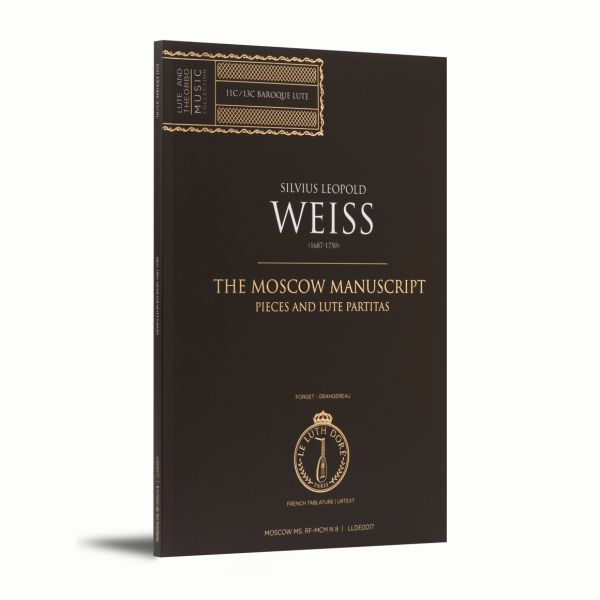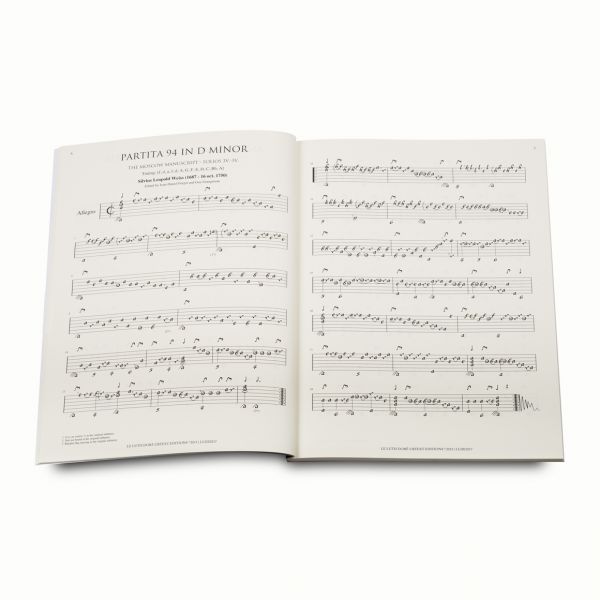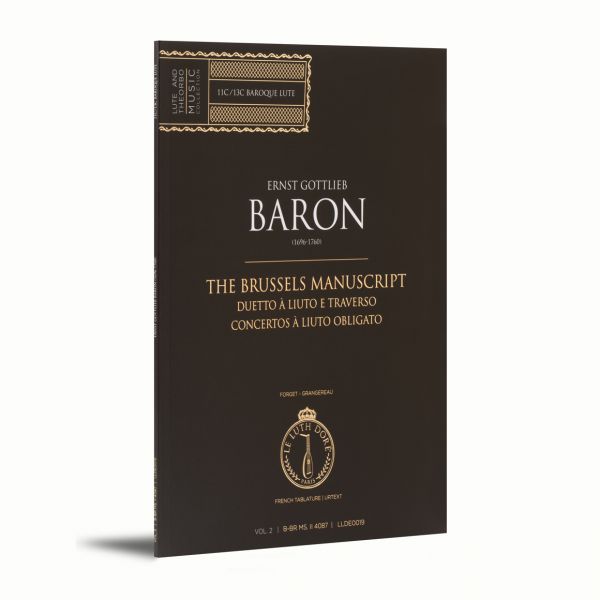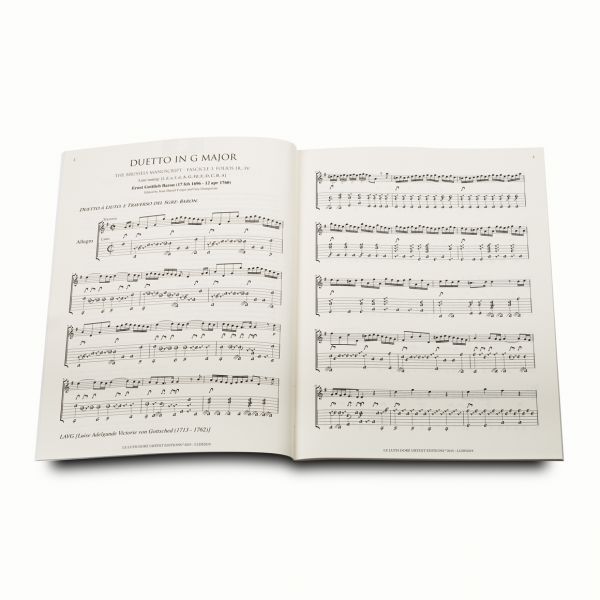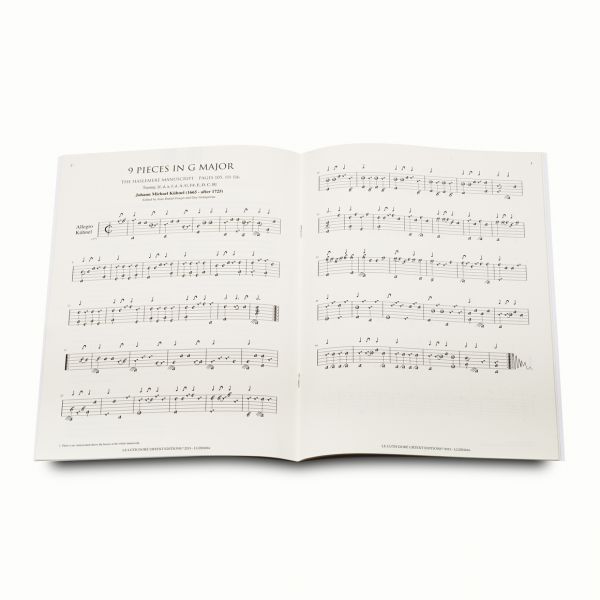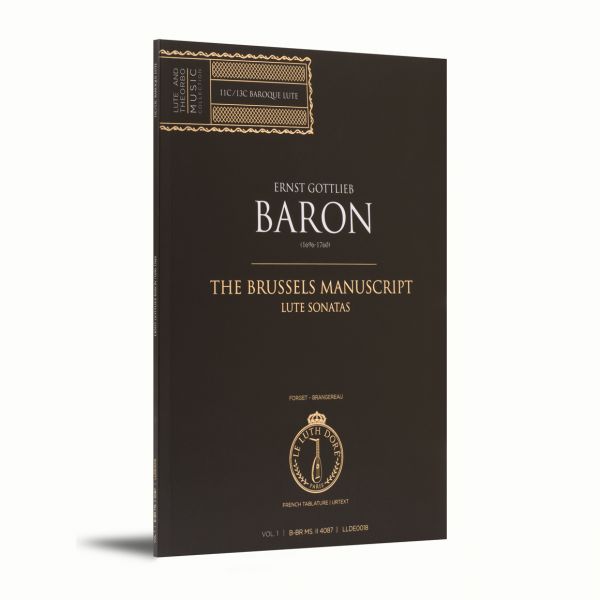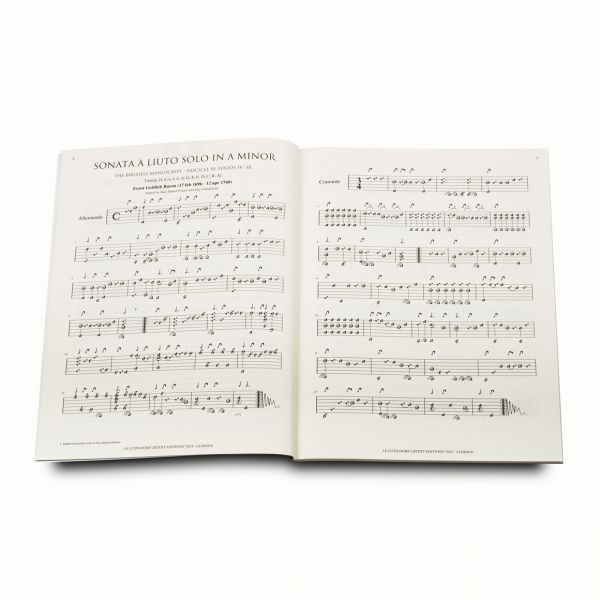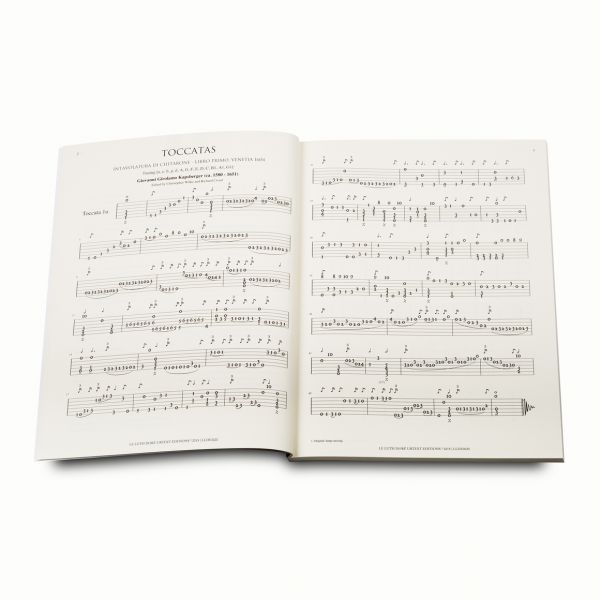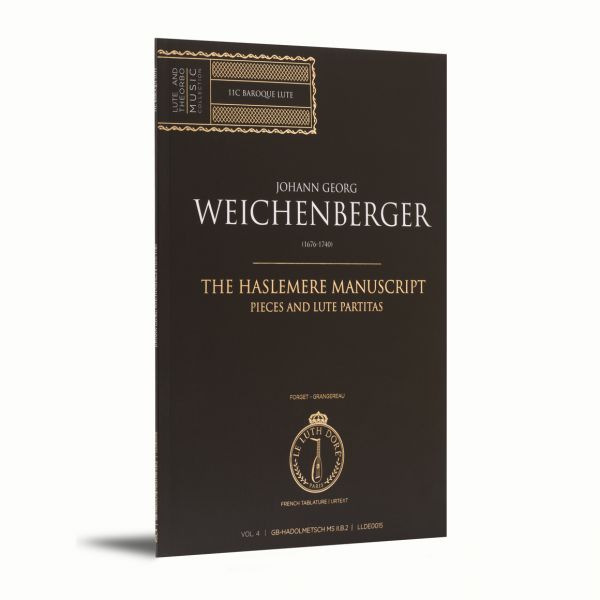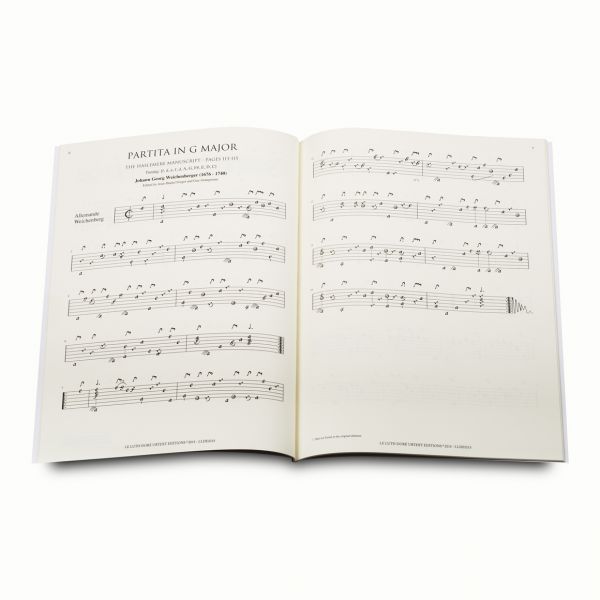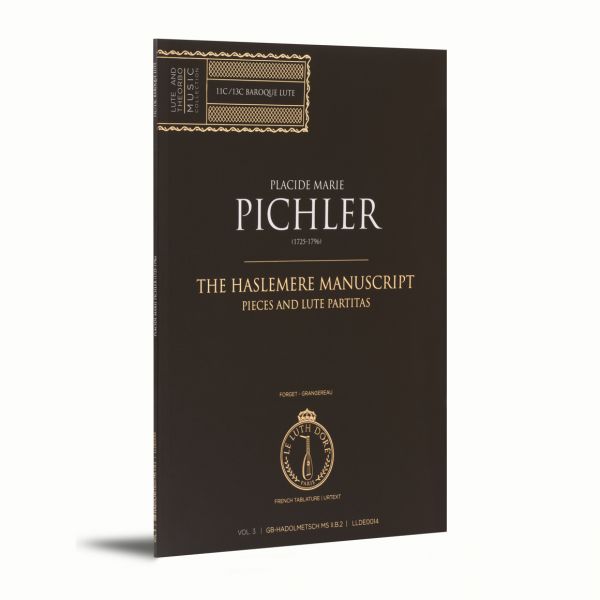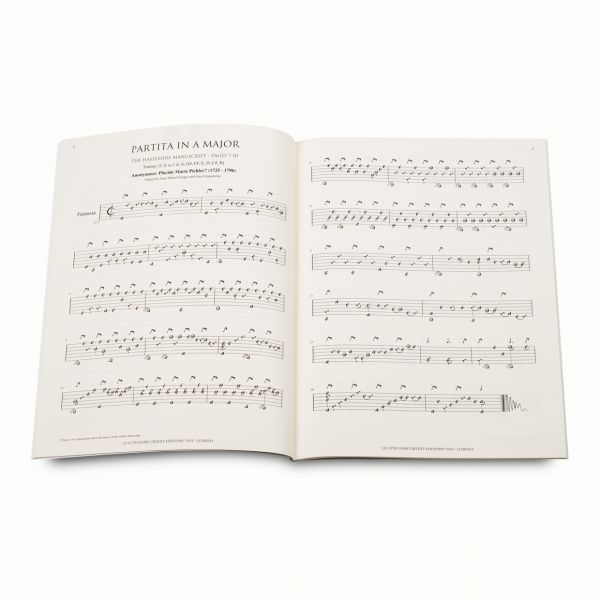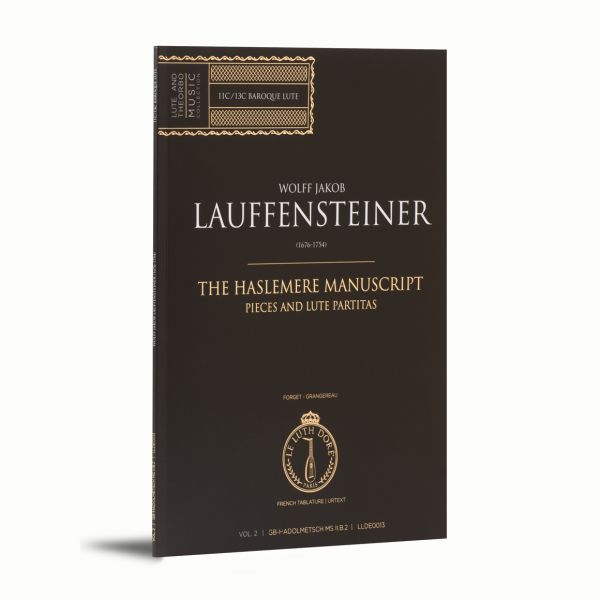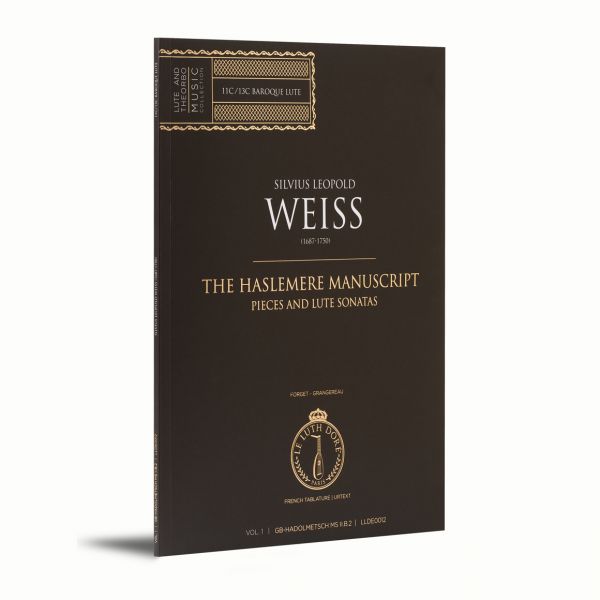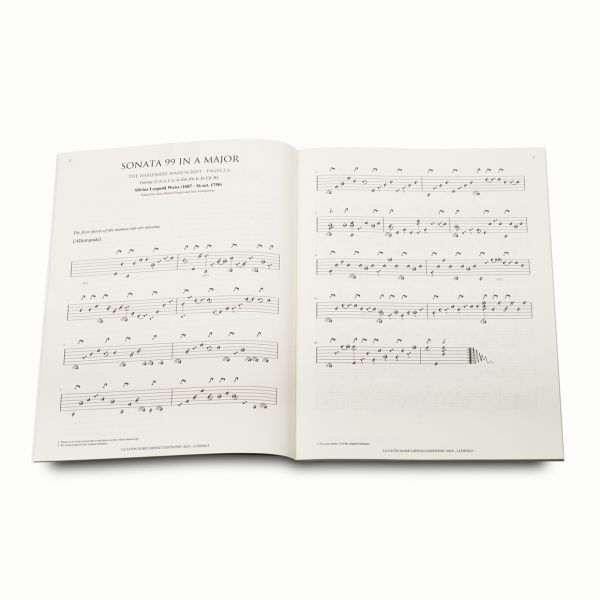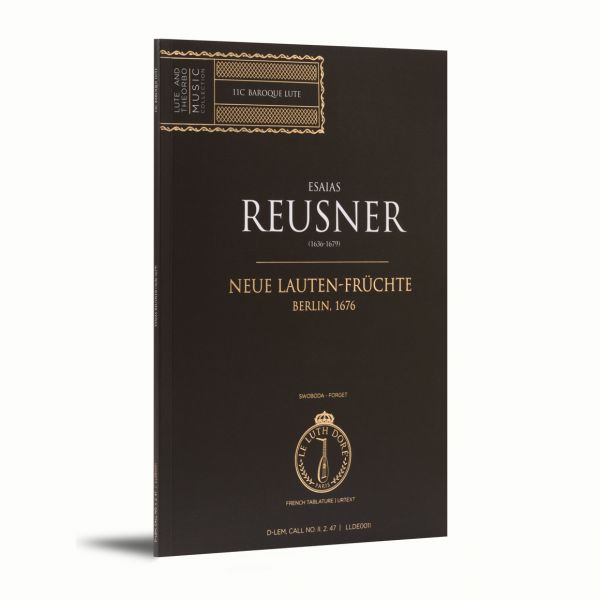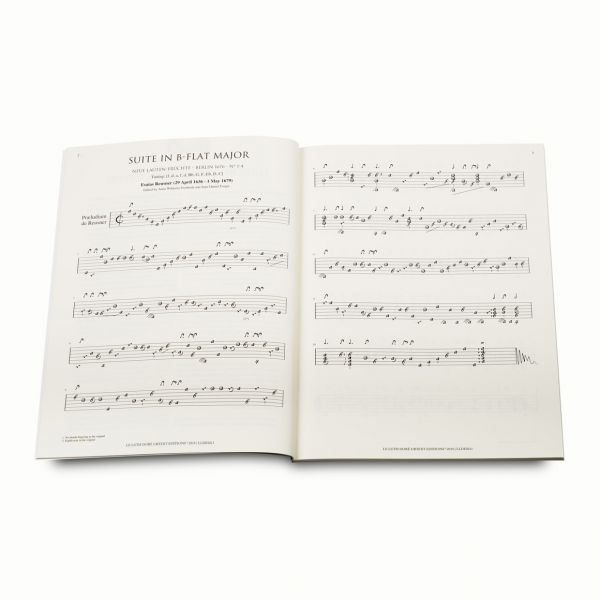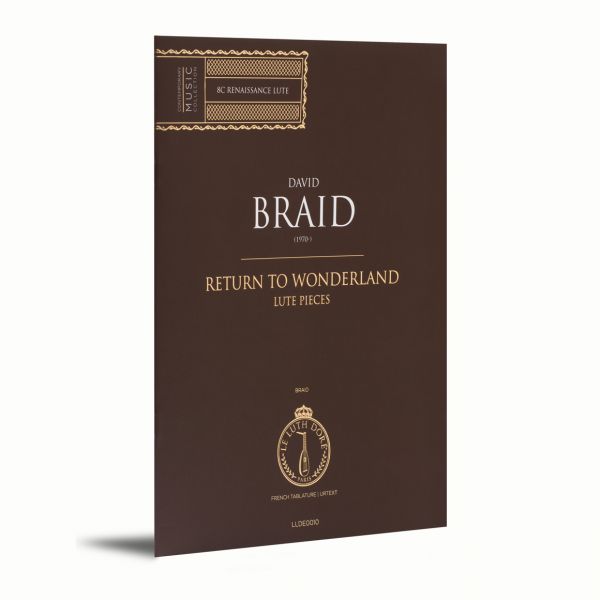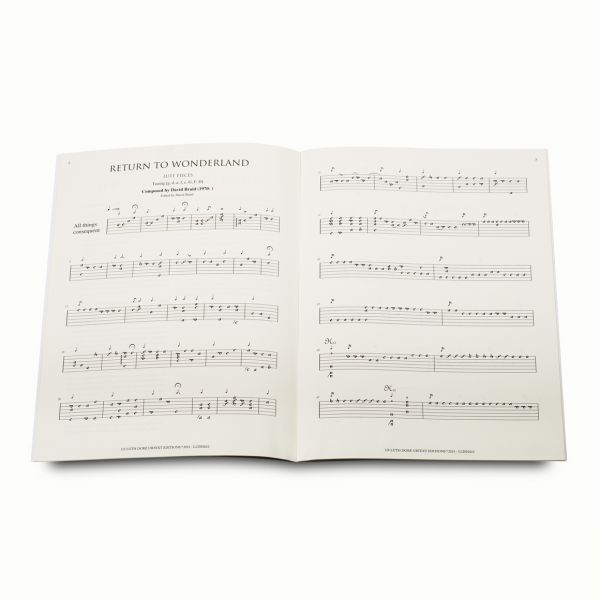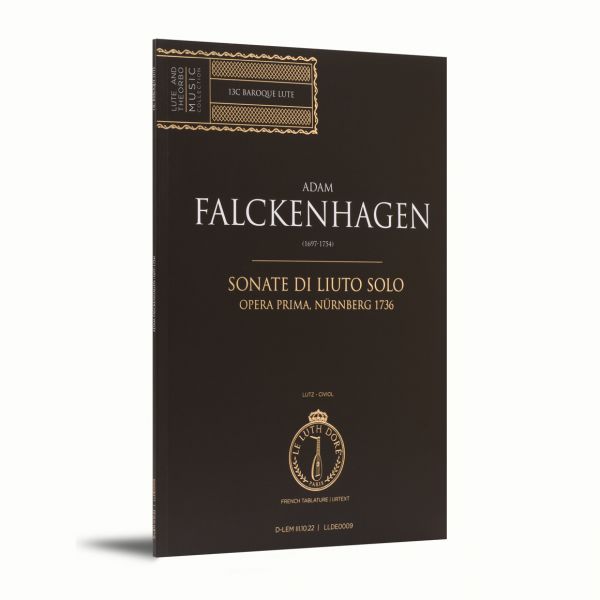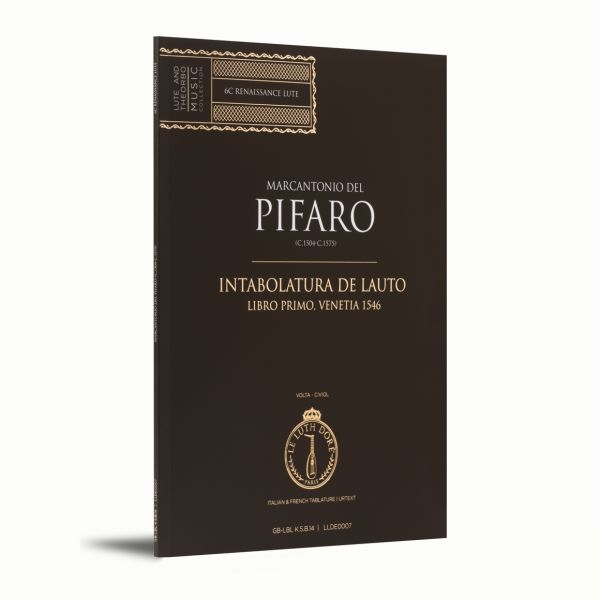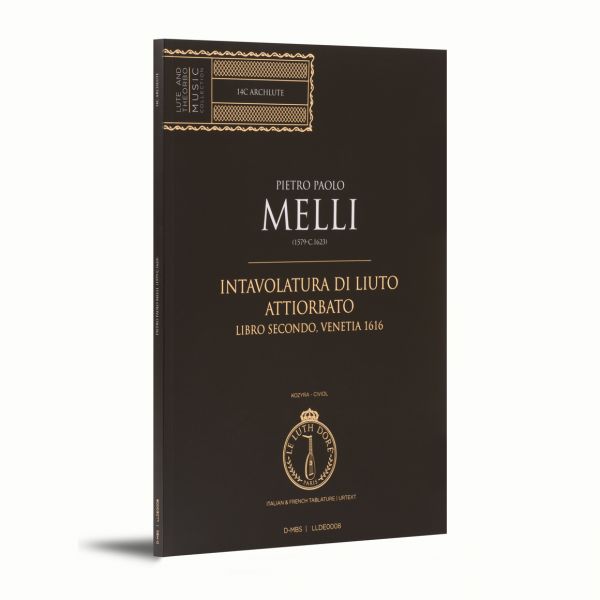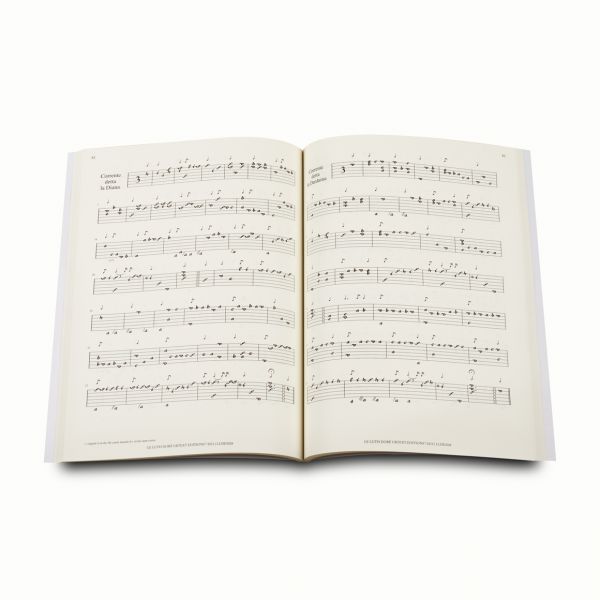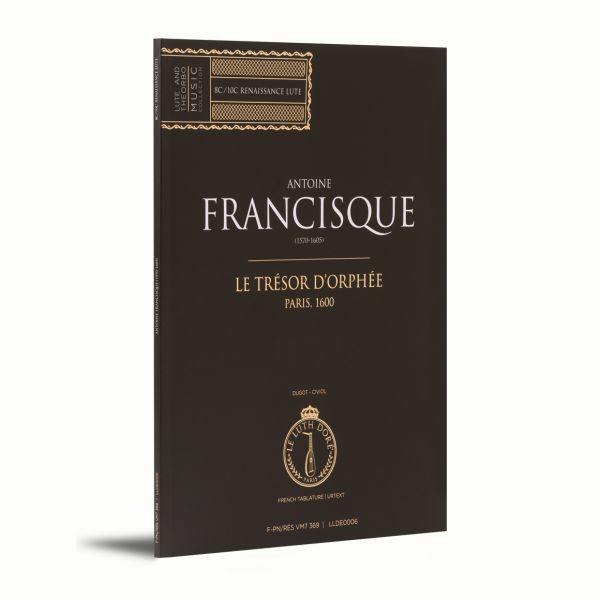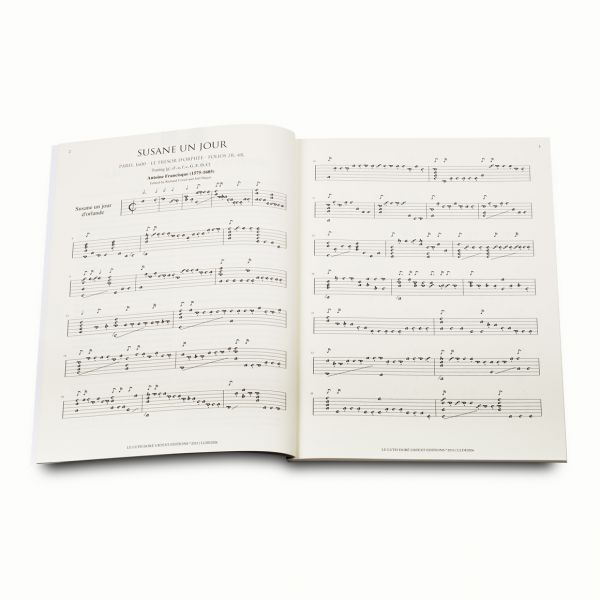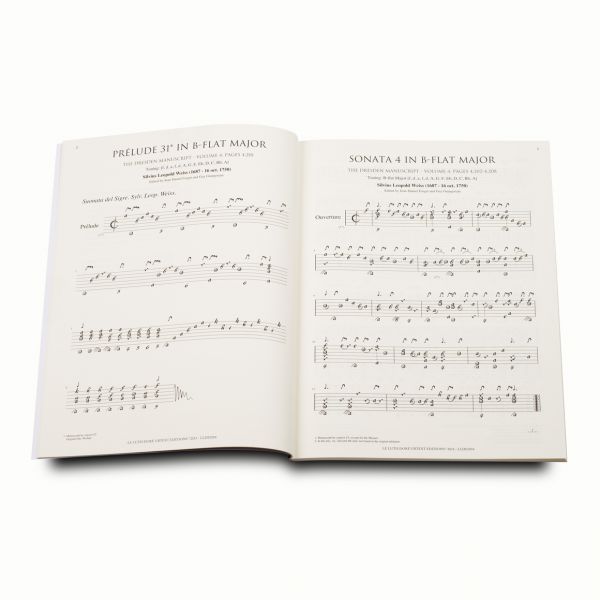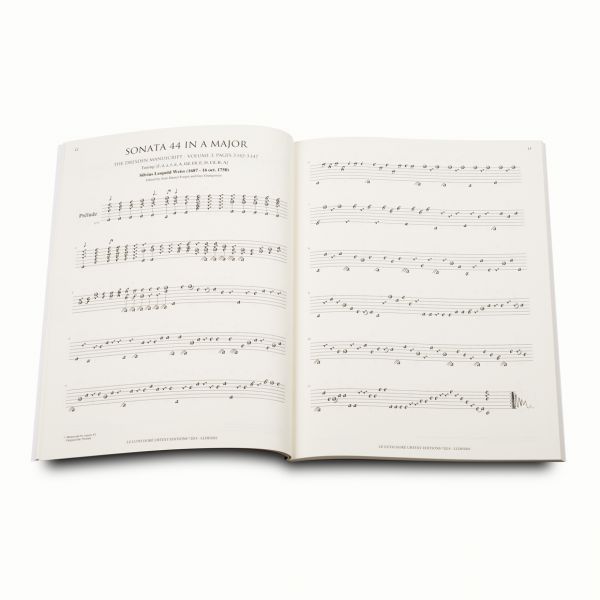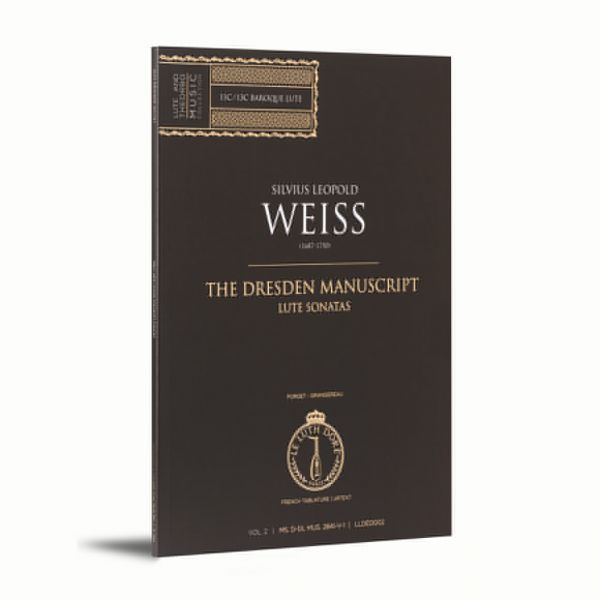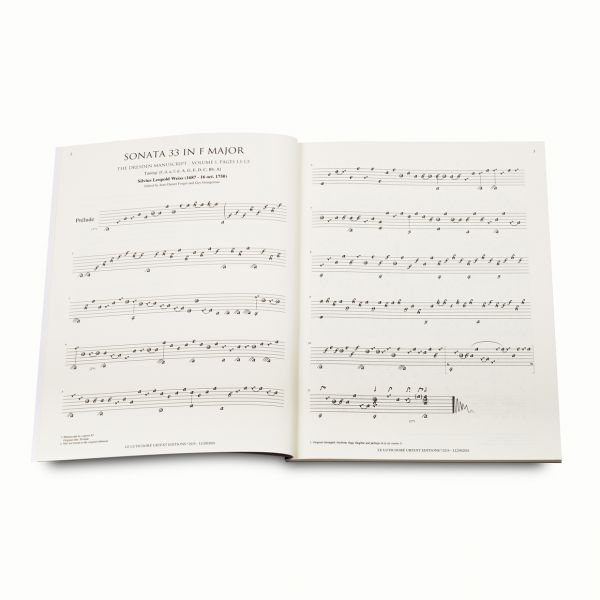The Dresden Manuscript
The Sächsische Landesbibliothek of Dresden has six volumes of French tablatures, referenced as D‑Dl Ms. Mus. 2841‑V‑1,1 à 6. The 34 solo sonatas therein, of various origins, are written in French tablature for the baroque lute (11-course for the earliest, but mainly 13-course). They are scrupulously arranged by key in five volumes, plus a volume of ensemble music of which only the part of a single lute is extant. All pieces were composed by Silvius Leopold Weiss, from 1706 to the last days of his life in 1750. These manuscripts constitute one of our most precious sources for the composer’s music.
The sonatas, either autograph or meticulously copied, were compiled by a collector. He classified them according to age and tuning of the bass courses, very carefully assembled and, later, bound them. Several annotations, pencilled in by Weiss at a late stage, denote an elderly hand.
In the first five volumes, we can identify three different handwritings: that of Weiss himself, that of the manuscripts’ compiler (whose writing style seems to have changed over a long period of time), and that of another copyist, often less careful and precise.
The Sächsische Landesbibliothek purchased the manuscripts in 1929, at the sale of the collection of the musicologist and bibliophile Werner Wolffheim (1877‑1930). Several pages were subsequently damaged during the bombing of Dresden in 1945.
Silvius Leopold Weiss (1687‑1750)
Silvius Leopold Weiss was born in 1687 in the village of Grottkau, near Breslau. His father Johann Jacob, a proficient lutenist, taught his three children how to play, as well as the rules of harmony and the practice of basso continuo. A child prodigy, Silvius Leopold performed before the Emperor Leopold I who, although consumed with his war against Louis XIV, was a great music lover.
From 1707 to 1714 he lived in Italy. In Rome, he met Arcangelo Corelli and befriended the Scarlattis. Subsequently, he is thought to have entered the service of the Governor of Further Austria, who resided in Innsbruck. In 1718, he obtained a well-paid position in the Dresden Court Orchestra.
A first mission took him to Vienna for eight months, where he was immersed in the musical life of Austria, both at the Court and in town. It was there that he discovered the galant style, which would leave its mark on all his future compositions.
He subsequently settled in Dresden where, although he often travelled, he spent the rest of his life. He was a brilliant continuo player at the Court, the Church and, above all, the Opera. His playing and improvisations were so highly esteemed that he became the best paid and most demanded instrumentalist in Dresden; even the considerable financial incentives offered by the Court of Vienna could not lure him away.
Silvius Leopold Weiss frequented the best musicians of his era. He was appreciated by princes, often lutenists themselves. Thus, between 1725 and 1730, he made several sojourns in Prague to teach his art to Prince Lobkowitz and his wife, to Johann Antonin Losy von Losimthal (Count d’Logy), Imperial Governor of Bohemia, or to Ludwig Joseph Cajetan, Baron von Hartig, Imperialo Governor of the city of Prague. Silvius Leopold Weiss met and played music with Johann Sebastian Bach when the latter, living in Leipzig, came to visit his young son Wilhelm Friedmann, an organist in Dresden.
Weiss was the main promoter of fundamental modifications to the lute: the addition of a 13th course and the subsequent lengthening of the lowest courses by means of a second pegbox on a neck extension, similar to the theorbo.
Silvius Leopold Weiss was an accomplished musician whose compositions were very solid, placing him on a par with his most distinguished contemporaries: Johann Sebastian Bach, Georg Friedrich Händel or Jan Dismas Zelenka. However, he only composed for his instrument. His daily practice of continuo and improvisation deeply influenced his entire work. His characteristic touch can be found in his unmeasured preludes and in his skillful handling of very elaborate sequences. He always made brilliant use of the possibilities afforded by the lute’s particular tuning.
Silvius Leopold Weiss died on 16 October 1750, leaving his widow Marie–Elizabeth and his seven children in financial straits. His son Johann Adolf Faustinus (1741‑1814) was the only one to follow in his father’s footsteps, and became a chamber lutenist at the Court of Dresden. Silvius Leopold Weiss was buried outside the city walls, in the Katholischer Friedhof.
Jean-Daniel Forget | Le Luth Doré © 2015









